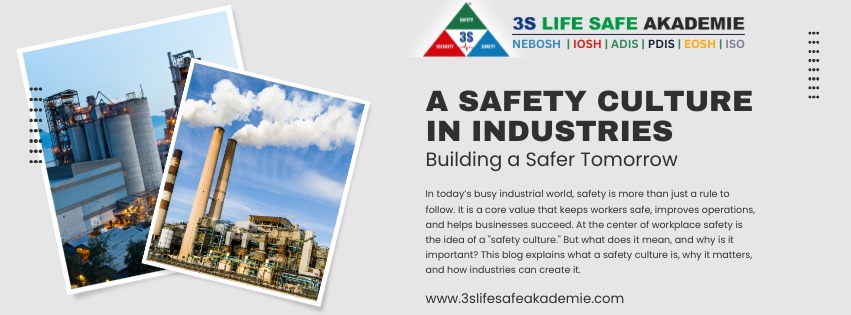In today’s busy industrial world, safety is more than just a rule to follow. It is a core value that keeps workers safe, improves operations, and helps businesses succeed. At the center of workplace safety is the idea of a "safety culture." But what does it mean, and why is it important? This blog explains what a safety culture is, why it matters, and how industries can create it.
What is a Safety Culture?
A safety culture is how an organization’s people think about and act on safety. It goes beyond safety rules or programs. Instead, it is about shared beliefs and attitudes that make safety a priority for everyone.
Key features of a safety culture include:
- Preventing accidents: Workers and management look for dangers and fix them before they cause harm.
- Open communication: Employees feel comfortable reporting safety issues without fear.
- Ongoing improvement: Companies regularly check their safety practices and make changes to improve.
Why is a Safety Culture Important?
- Fewer Accidents: Industries like manufacturing, construction, and oil & gas have many risks. A strong safety culture reduces accidents, saves lives, and prevents work stoppages.
- Following Safety Laws: Safety regulations like those from OSHA or HSE must be followed. A safety culture helps companies meet these rules and avoid fines.
- Happier Employees: When workers feel safe, they are more productive and loyal to the company.
- Saving Money: Fewer accidents mean lower insurance costs, fewer payouts, and no delays in work.
Key Parts of a Strong Safety Culture
To build a safety culture, industries should focus on these areas:
- Leadership Support: Safety must start with leaders. They should set clear goals, provide resources, and lead by example.
- Employee Involvement: Get workers involved in safety activities like reporting hazards and joining safety meetings.
- Training: Teach workers how to spot and handle dangers. Regular safety training keeps everyone prepared.
- Clear Rules: Have written safety procedures that everyone can follow. These rules should be simple and easy to understand.
- Check and Improve: Use safety checks, incident reports, and performance reviews to find problems and fix them.
How to Build a Safety Culture
Building a safety culture takes time and effort. Here’s how companies can do it:
- Review Current Safety Practices: Look at existing safety policies and identify what works and what doesn’t.
- Set Safety Goals: Create a clear vision of what the company wants to achieve in safety.
- Encourage Employee Participation: Involve employees in safety plans and listen to their ideas. Reward them for reporting hazards or improving safety.
- Use Technology: Tools like sensors, AI, and wearable devices can help monitor safety and prevent accidents.
- Celebrate Success: Recognize and reward teams or workers for meeting safety goals.
Examples of Safety Culture in Action
- Oil and Gas: Companies like Shell use strict safety measures, regular drills, and technology to reduce risks.
- Manufacturing: Toyota focuses on improving safety at every step of production, reducing mistakes and accidents.
- Construction: Some companies use wearable devices and AI tools to track worker safety and predict risks in real time.
Challenges in Building a Safety Culture
Even though it’s important, creating a safety culture isn’t always easy:
- Resistance to Change: People may be used to old ways and resist new safety practices.
- Limited Resources: Smaller companies may not have enough money for training or new tools.
- Inconsistent Enforcement: If safety rules are not applied equally, it weakens the culture.
Conclusion
A safety culture is not just a trendy idea. It is a key part of running a safe and successful business. When safety is part of a company’s core values, everyone benefits. It protects workers, improves productivity, and ensures compliance with laws. Safety is everyone’s responsibility, and investing in a safety culture brings big rewards.
